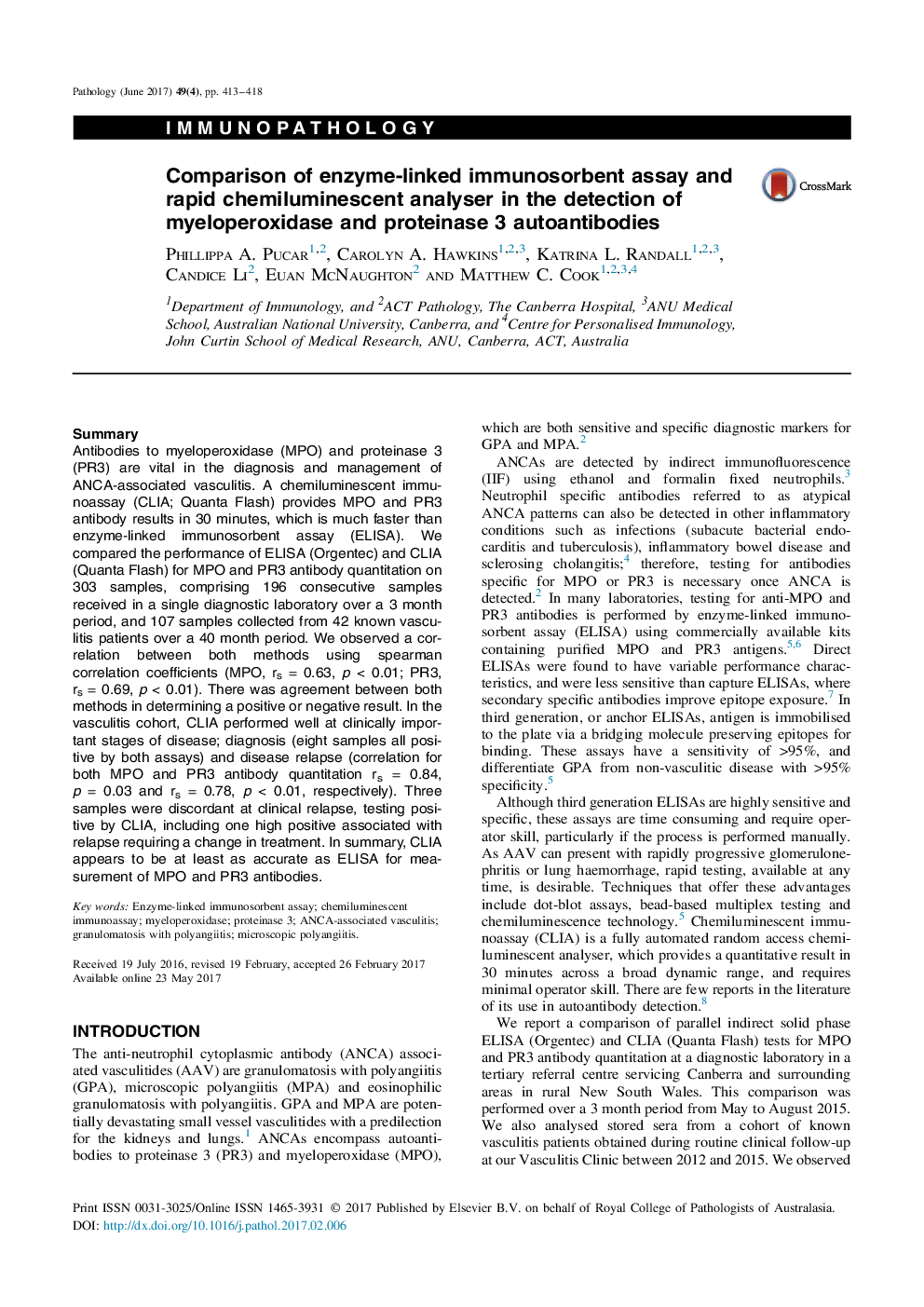| Article ID | Journal | Published Year | Pages | File Type |
|---|---|---|---|---|
| 6463214 | Pathology | 2017 | 6 Pages |
SummaryAntibodies to myeloperoxidase (MPO) and proteinase 3 (PR3) are vital in the diagnosis and management of ANCA-associated vasculitis. A chemiluminescent immunoassay (CLIA; Quanta Flash) provides MPO and PR3 antibody results in 30 minutes, which is much faster than enzyme-linked immunosorbent assay (ELISA). We compared the performance of ELISA (Orgentec) and CLIA (Quanta Flash) for MPO and PR3 antibody quantitation on 303 samples, comprising 196 consecutive samples received in a single diagnostic laboratory over a 3 month period, and 107 samples collected from 42 known vasculitis patients over a 40 month period. We observed a correlation between both methods using spearman correlation coefficients (MPO, rs = 0.63, p < 0.01; PR3, rs = 0.69, p < 0.01). There was agreement between both methods in determining a positive or negative result. In the vasculitis cohort, CLIA performed well at clinically important stages of disease; diagnosis (eight samples all positive by both assays) and disease relapse (correlation for both MPO and PR3 antibody quantitation rs = 0.84, p = 0.03 and rs = 0.78, p < 0.01, respectively). Three samples were discordant at clinical relapse, testing positive by CLIA, including one high positive associated with relapse requiring a change in treatment. In summary, CLIA appears to be at least as accurate as ELISA for measurement of MPO and PR3 antibodies.
